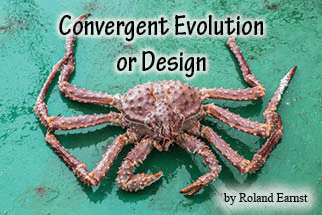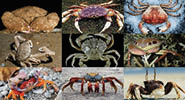Return to 3rd Quarter 2023 articles.

According to Darwinian evolution, all life forms can trace their heritage to a common ancestor. From that first life form, branches diverged to form a tree of life. At some point, those branches split again. When two life forms on different branches develop a similar characteristic that their last common ancestor did not have, scientists call it convergent evolution. There are many examples, such as dolphins and bats. Both use echolocation for navigating or finding food, but they cannot be closely related.

Another example is animals that can fly including insects, birds, and mammals such as bats. Nobody claims that these creatures have a common ancestor that could fly. However, they all use aerodynamic principles and wings to defy gravity. We see similar mouthparts in animals that suck blood, such as mosquitos and fleas. Both are insects but not closely related. We can say the same for insects that suck nectar from flowers, such as bees and butterflies.
Many plants produce edible fruits to encourage animals to scatter their seeds. That includes tomatoes, apples, and raspberries — which are not related. We find similar types of eyes in very dissimilar animals. Birds, butterflies, and even some plants use structural coloration, even though they are unrelated and live in very different ecosystems.
According to evolutionary scientists, one of the most dramatic examples of convergent evolution is found in thousands of plants that use ants to disperse their seeds. The plants attach food bodies called elaiosomes to their seeds. The elaiosomes are rich in nutrients to attract ants. The ants carry the seeds to their colonies, where they eat the elaiosomes and discard the seeds. Scientists say that over 11,000 plant species developed this technique, called myrmecochory, more than 100 times independently. How could that happen? Evolutionists call it convergent evolution, but could it perhaps be evidence for design in plants?
A repeated convergence appears in the crab-like body shape. A crab has a flat, rounded shell, and a tail that tucks under its body. Evolutionary biologists say that body plan has “evolved” at least five times. This convergence is so common that scientists have named it carcinization. However, they can only guess why it happened.

The result of carcinization is that many crustaceans that are not closely related have a crab shape, and we often call them crabs, even though they are not true crabs. A familiar example is the so-called king crab on the opposite page. Crab-shaped animals come in a wide range of sizes and live in various habitats, from the oceans to the mountains.
With these creatures living in diverse ecosystems, scientists have difficulty explaining why they evolved the same body plan. One suggestion by researchers is greater safety from predators because the body shape allows them to move sideways.
Evolutionary biologists may be unable to explain how various species independently evolved the same traits, but they insist that these are all examples of convergent evolution. In other words, evolution is intelligent and uses the same ideas in various species. Rather than convergent evolution, could the common traits be explained by a common Creator? Could an intelligent Creator have used the same creative ideas in multiple species? Which is the best explanation of the evidence? We suggest that evidence for design in living things calls for a Designer of life.
Picture credits:
Title block: © vasia111. Image from BigStock.com
MIddle left: © Terry Reed. Image from BigStock.com
Middle right: © CreativeNaturePhotography. Image from BigStock.com
https://commons.wikimedia.org/wiki/File:Brachyura_montage.jpg
Scripture links/references are from BibleGateway.com. Unhighlighted scriptures can be looked up at their website.
